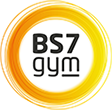16 August 2016
Gym Manager, Gary, gives his advice on The Shrug.......
Whilst spending some time on the gym floor recently observing members’ techniques, training styles and approaches to programming, I was reminded of a contrast I had previously noticed and decided I should write it down before I forgot about it again. By doing so I hope that others will also consider my thoughts and at least make informed decisions regarding their exercise selection and techniques employed in their training.
My first observation was how many people love to use “The Shrug” in their training. The exercise I am referring to here is the body builder style of shrug whereby the shoulders are elevated towards the ears in a slow movement and allowed to return to their starting position equally slowly. There are of course many variations such as barbell, dumbbell, trap bar, smith machine, weight disc etc. but they are essentially the same type of movement. The only objective of this exercise for most seems to be to increase the size of the upper trapezius muscle for aesthetic purposes. Although this objective may be met, I would argue, what is the point? There is limited functionality to the exercise and the upper traps may well end up becoming overworked and tight and postural distortions can occur which have a negative impact on performance. Yet it seems everyone loves to shrug.
My second observation concerns Olympic lifts which require a huge shrug in the second pull of the clean and snatch. However, it seems many people neglect to use a shrug in these lifts, instead opting for a no shrug, elbows low, let’s rely on external rotation approach to get the bar in place. This can be very hazardous for the shoulder with the rotator cuff at particular risk of injury, not to mention impeding performance in the lift and reducing results. The difference with the shrug in the Olympic lifts is that it is an extremely fast and explosive move that generates a large amount of force and improves force transfer to the bar, thus enhancing the lift performance and training results. This particular shrug does have validity and functional transfer, especially in sporting contexts where speed of movement is of critical importance, as well as no doubt contributing to the aesthetics of the upper trapezius.
In short, let’s ditch the slow shrug that does more harm than good (who wants to train to be slow anyway?) and incorporate an explosive shrug to the second pull of our Olympic lifts so we create integrated and coordinated movement which makes the exercise safer and more effective.

